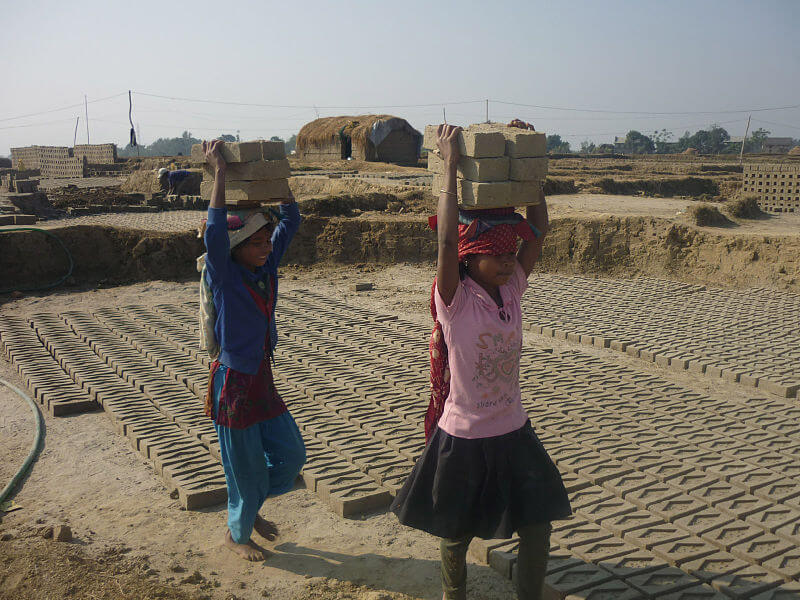Today is the World Day Against Child Labour. As with so many other things in the context of a world riddled with coronavirus, what might have been an opportunity to reflect on and celebrate progress is now overshadowed by the fear that this progress may all too quickly become unravelled.
Since 2000 global child labour has decreased by 94 million – a laudable achievement in just two decades. However a new briefing released by the International Labour Organisation (ILO) and UNICEF warns millions more children risk being pushed into child labour as a result of the COVID-19 crisis.
Guy Ryder, Director-General of ILO highlighted that:
“As the pandemic wreaks havoc on family incomes, without support, many could resort to child labour”
Additionally, the virus is compounding the situation of those children already in child labour, with many facing longer working hours under increasingly deteriorating conditions. More children may also be subjected to the worst forms of labour – a predefined term that encompasses the sale of a child, the trafficking of children, forced labour, sexual exploitation and more. – as a result of the virus.
Expanding on this, Henrietta Fore, Executive Director of UNICEF said:
“In times of crisis, child labour becomes a coping mechanism for many families…As poverty rises, schools close and the availability of social services decreases, more children are pushed into the workforce. As we re-imagine the world post-COVID, we need to make sure that children and their families have the tools they need to weather similar storms in the future. Quality education, social protection services and better economic opportunities can be game changers.”
The 2019 Verisk Maplecroft Child Labour Index (CLI) identified 27 countries – which account for roughly 12% of the world’s population or 900 million people – as “extreme risk”. A further 82 countries are categorised as “high risk” in the index.
Already in 2019 the CLI found that progress on child labour in the world’s manufacturing hubs was flatlining. In these hubs, child labour props up global supply chains. The coronavirus pandemic has left factories idle and therefore no wages being paid for many of the poorest workers, including children.
With the world now eager to kick start their economies it is these same production lines that will be expected to rapidly ramp up, using the cheapest labour available.
This will undoubtably worsen the situation of the 1.2 million children are currently engaged in worst forms of child labour in Bangladesh; a country where 87 per cent of the population are involved in informal economies, the most affected as a result of the economic crisis caused by COVID.
Today on World Child Labour Day it should be an opportunity to applaud some progress. There are some highlights as seen in Iran, a country which reportedly has 14% of its children forcibly working in dangerous and unsanitary conditions who this week passed a new law criminalising child abuse, significantly expanding the legal protections offered to children. However, as Iran slips towards economic disaster it remains to be seen if there is any adherence to the new law.
The virus unequally affects people living in poverty and low-income economies. Previously, after drastic floods, families in Bangladesh have been able to rely on credit allowances to avoid resorting to child labour. However, it is widely accepted that a credit crisis will follow hot on the heels of the global economic crisis, with lenders hesitant to lend for fears that families will be unable to repay and businesses likely to default.
In Yemen, a country deeply reliant on foreign aid, the lack of humanitarian assistance is forcing many in the world’s most fragile state to resort to more harmful coping mechanisms; such as child labour and marrying off children to survive. With poverty rife across the country, a growing number of families have resorted to marrying off their daughters at a young age amid fears that they can no longer afford to provide for them, or that their husbands’ families were better equipped to care for them according to UNICEF.
The situation in Yemen illustrates how the provision of humanitarian assistance during COVID-19 is vital to ensuring the progress made on child labour is maintained. Similar examples can be seen in countries the world over.
An ILO and UNICEF press release states:
“Vulnerable population groups – such as those working in the informal economy and migrant workers – will suffer most from economic downturn, [because of] increased informality and unemployment, the general fall in living standards, health shocks and insufficient social protection systems, among other pressures.”
The accompanying brief identifies; increased social protection, easier access to credit, the promotion of decent work for adults, measures to get children back into school, eliminating school fees and more resources for law enforcement as measures needed to counter the threat of child labour under COVID-19.
Governments across the world – but particularly those countries identified as “extreme” or “high” risk – need to act swiftly to ensure that their response plans to this virus encompass measures that will reduce the risk of children being forced into labour. It is also crucial that international organisations such as UNICEF, as well as charities providing humanitarian aid on the ground, remain properly funded throughout this crisis. If these things don’t happen, this World Child Labour Day might be marked as the turning point that ended twenty years of progress.

